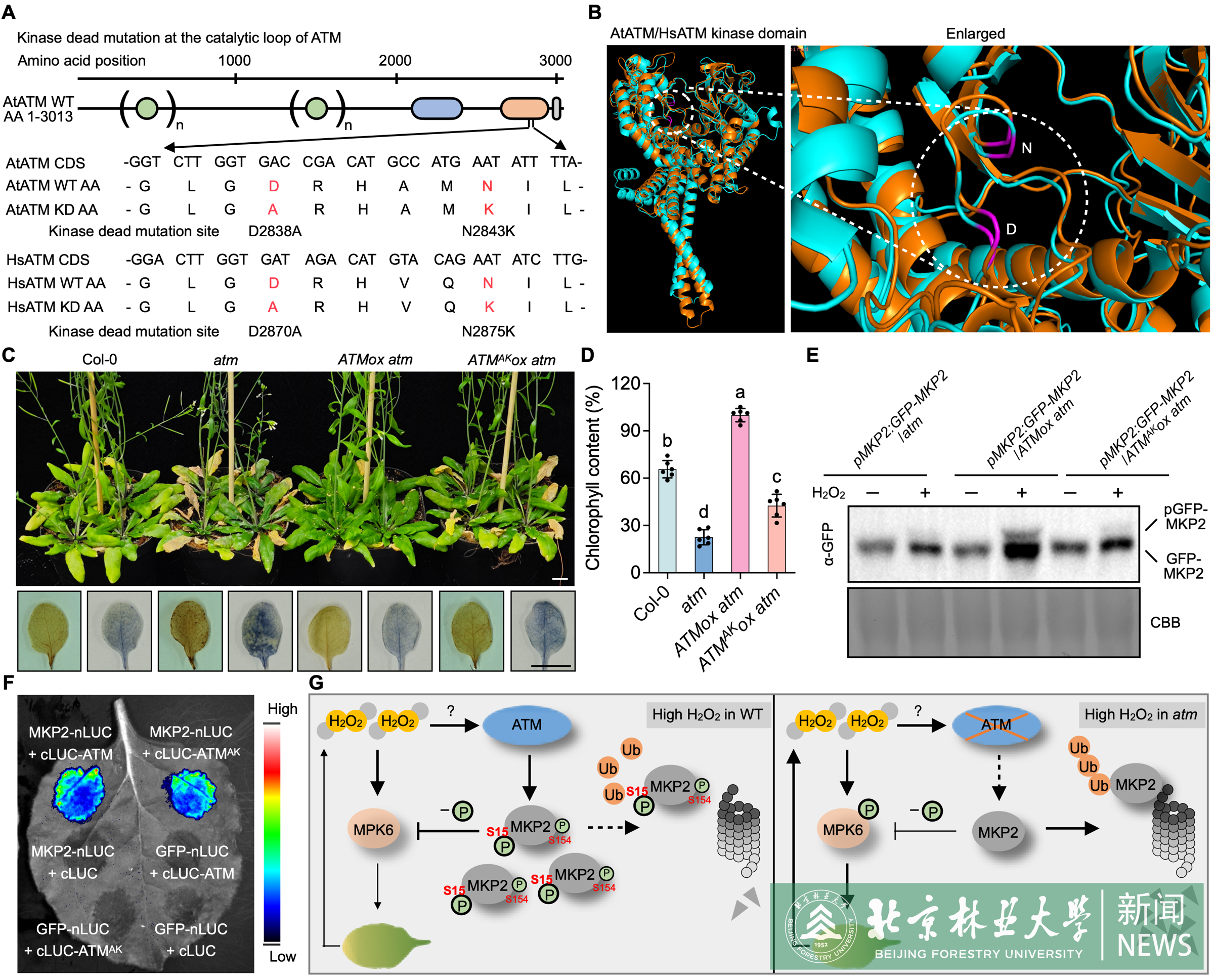Latest news
A collaborative study led by Professor Li Zhonghai from Beijing Forestry University's National Key Laboratory of Forest Genetics and Breeding and Professor Guo Hongwei from Southern University of Science and Technology (SUSTech) has been published in The Plant Cell (Q1 journal). The paper, titled "The kinase ATM delays Arabidopsis leaf senescence by stabilizing the phosphatase MKP2 in a phosphorylation-dependent manner", reveals a DNA repair-independent mechanism by which ATM kinase regulates reactive oxygen species (ROS)-induced leaf senescence.

Reactive oxygen species (ROS), such as hydrogen peroxide (H2O2) and superoxide anion (O2⁻), are inevitable byproducts of fundamental biochemical pathways in aerobic organisms, including glycolysis and photosynthesis, that are essential for energy production and storage. However, ROS are also highly reactive molecules that can cause oxidative damage to cellular macromolecules, such as nucleic acids, proteins, lipids, and carbohydrates, leading to dysfunction of cellular organelles and contributing to oxidative stress. Consequently, aerobic organisms have evolved elaborate enzymatic and nonenzymatic antioxidant defense mechanisms to scavenge ROS and prevent oxidative damage.
Arabidopsis thaliana (Arabidopsis) Ataxia Telangiectasia Mutated (ATM) kinase plays a vital role in orchestrating leaf senescence; however, the precise mechanisms remain elusive. Here, the study demonstrates that ATM kinase activity is essential for mitigating age- and reactive oxygen species-induced senescence, as restoration of wild-type ATM reverses premature senescence in the atm mutant, while a kinase-dead ATM variant is ineffective. ATM physically interacts with and phosphorylates Mitogen-Activated Protein Kinase Phosphatase 2 (MKP2) to enhance its stability under oxidative stress. Mutations in putative phosphorylation sites S15/154 on MKP2 disrupt its phosphorylation, stability, and senescence-delaying function. Moreover, mutation of mitogen-activated protein kinase 6, a downstream target of MKP2, alleviates the premature senescence phenotype of the atm mutant. Notably, the dual-specificity protein phosphatase 19 (HsDUSP19), a predicted human counter protein of MPK2, interacts with both ATM and HsATM and extends leaf longevity in Arabidopsis when overexpressed. These findings elucidate the molecular mechanisms underlying the role of ATM in leaf senescence and suggest that the ATM-MKP2 module is likely evolutionarily conserved in regulating the aging process across eukaryotes.

The study features co-corresponding authors Professor Li Zhonghai of Beijing Forestry University and Professor Guo Hongwei of Southern University of Science and Technology. First authorship is held by Dr. Zhang Yi, who conducted the research as a postdoctoral fellow at Beijing Forestry University and has since joined Southern University of Science and Technology as an assistant professor.
This work was supported by the National Key Research and Development Program of China (grant no. 2019YFA0903904), the National Natural Science Foundation of China (grant nos. 32470367, 32170345, 32011540381, 32200271), the Beijing Municipal Natural Science Foundation (grant no. 5232015), the National Research Foundation (NRF) of Korea (grants nos. 2021R1A2C3011104, RS-2023-00245912, RS-2024-00345045), and the startup funding for plant aging research from Beijing Forestry University.
Paper link: https://academic.oup.com/plcell/advance-article/doi/10.1093/plcell/koaf066/8093449
Written by Li Zhonghai
Translated and edited by Song He
Reviewed by Yu Yangyang












